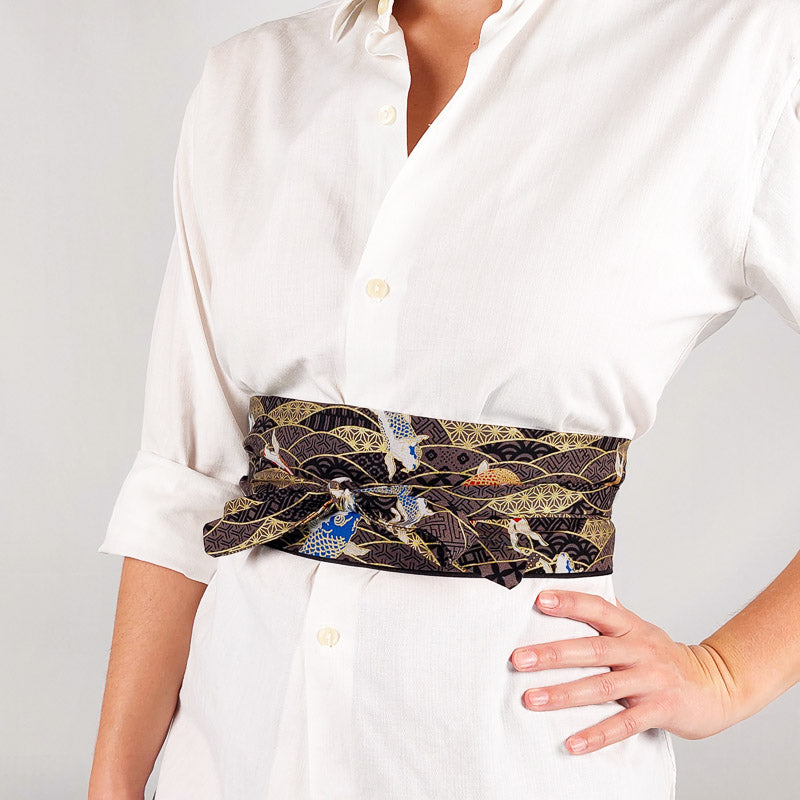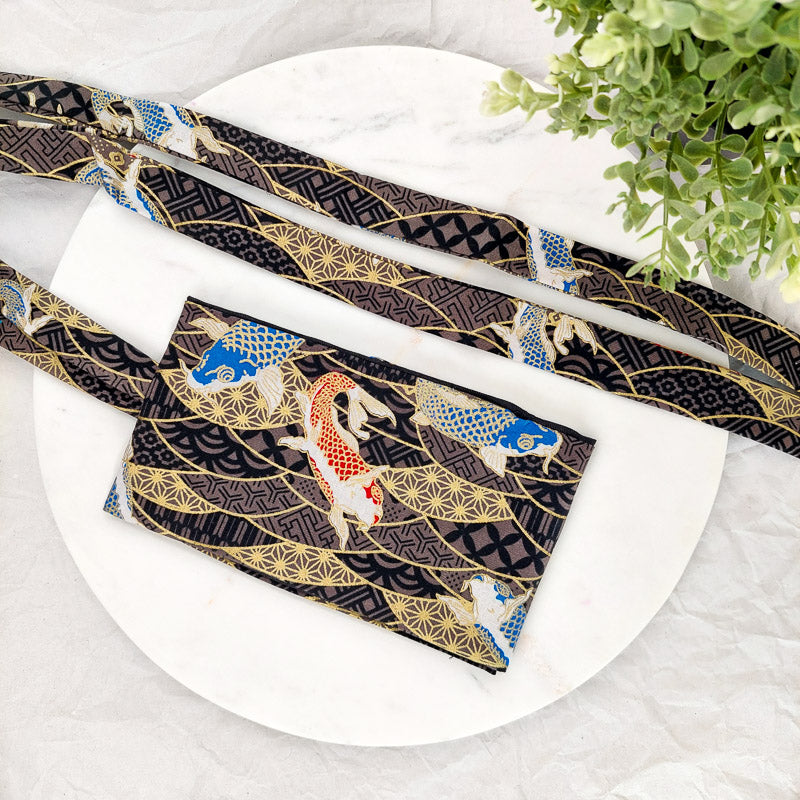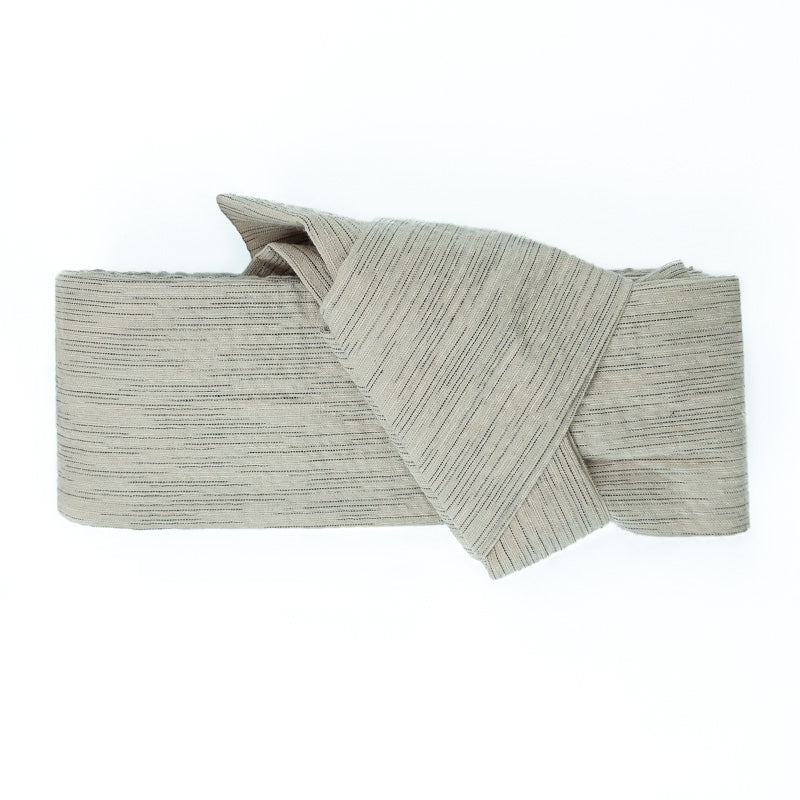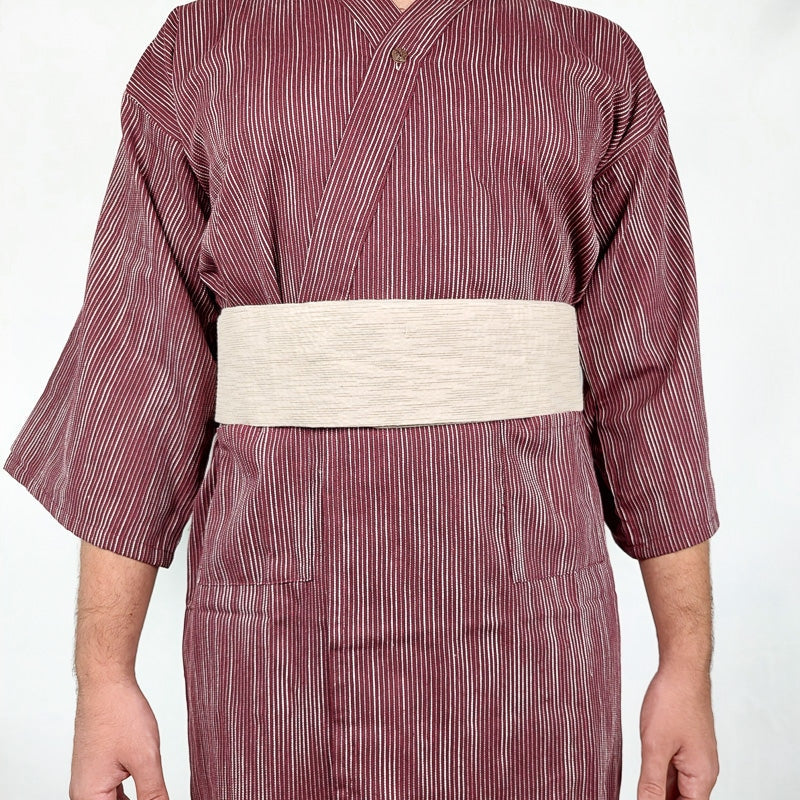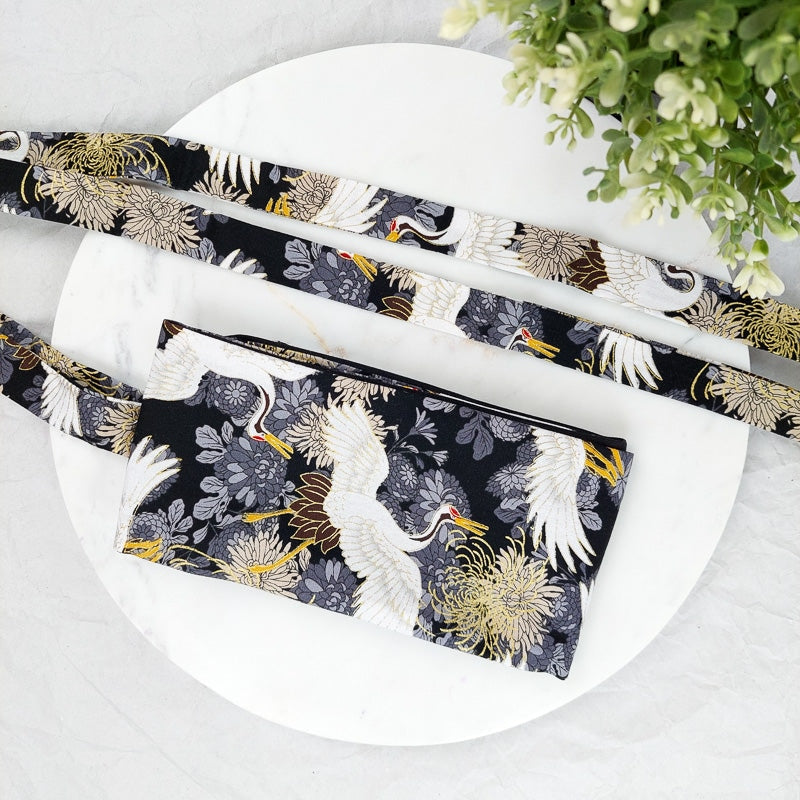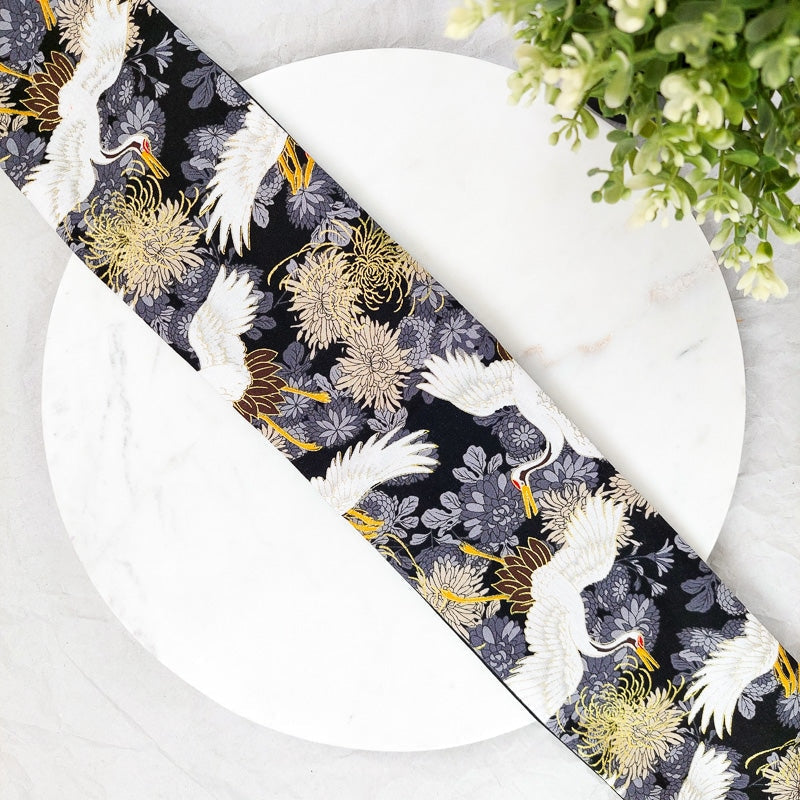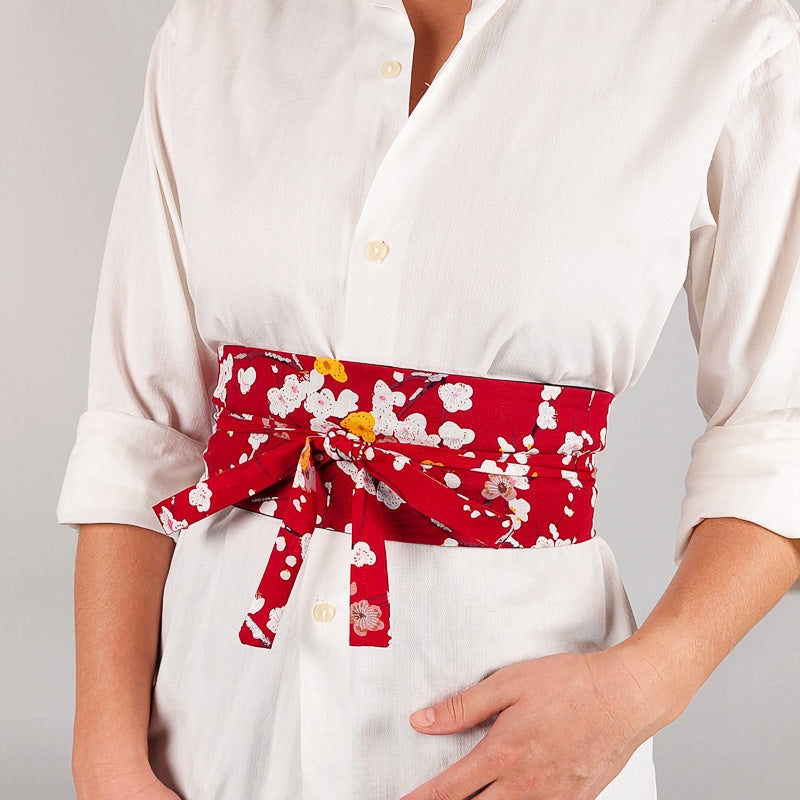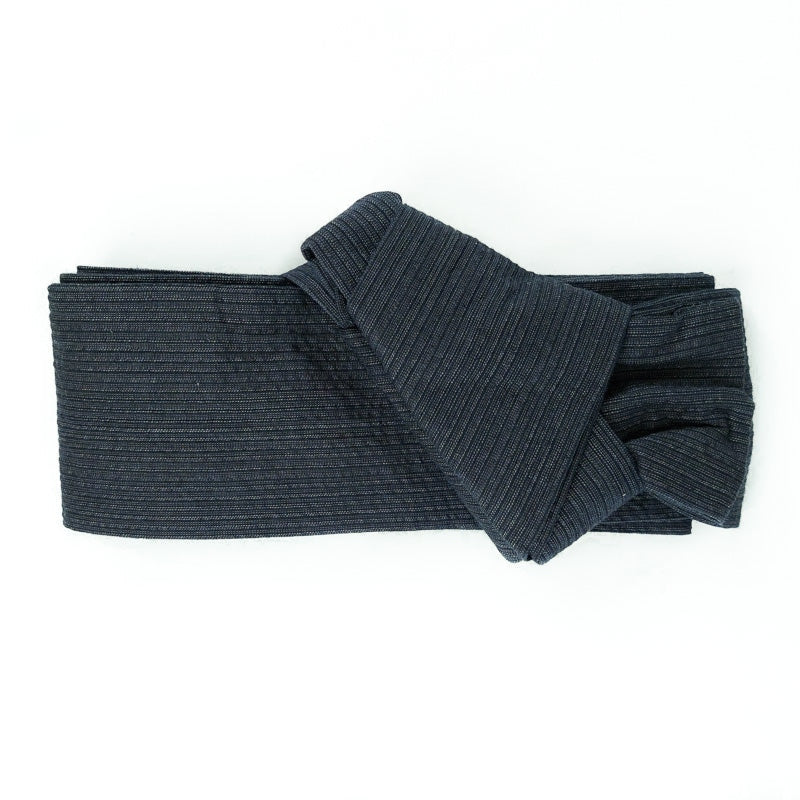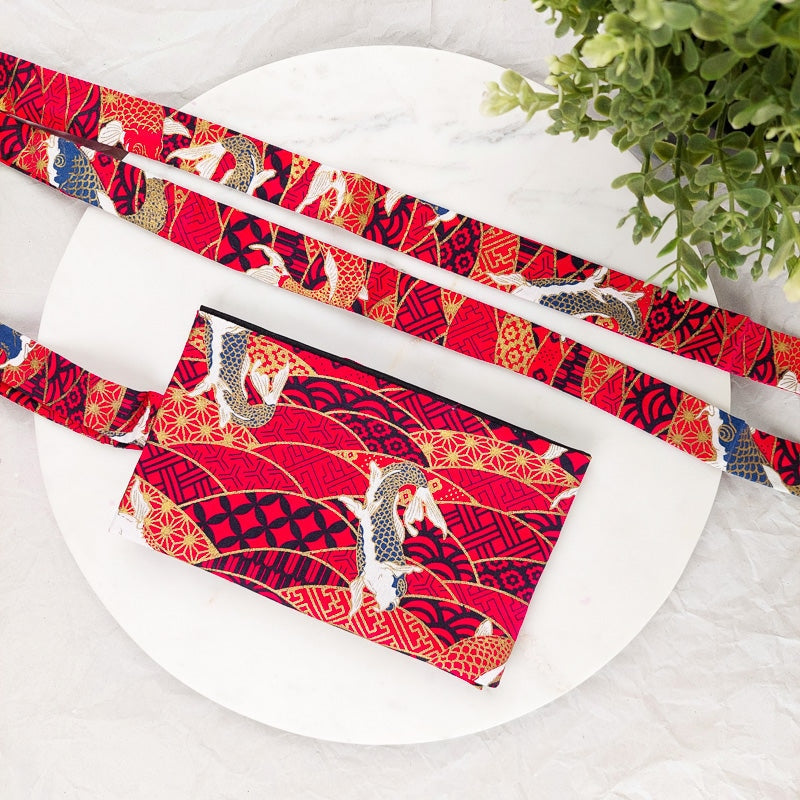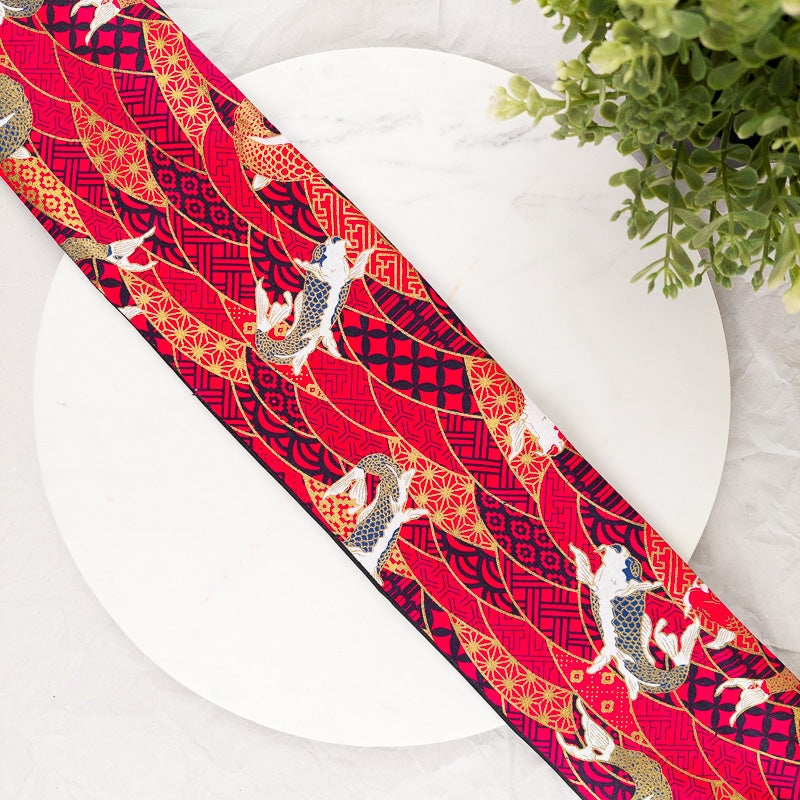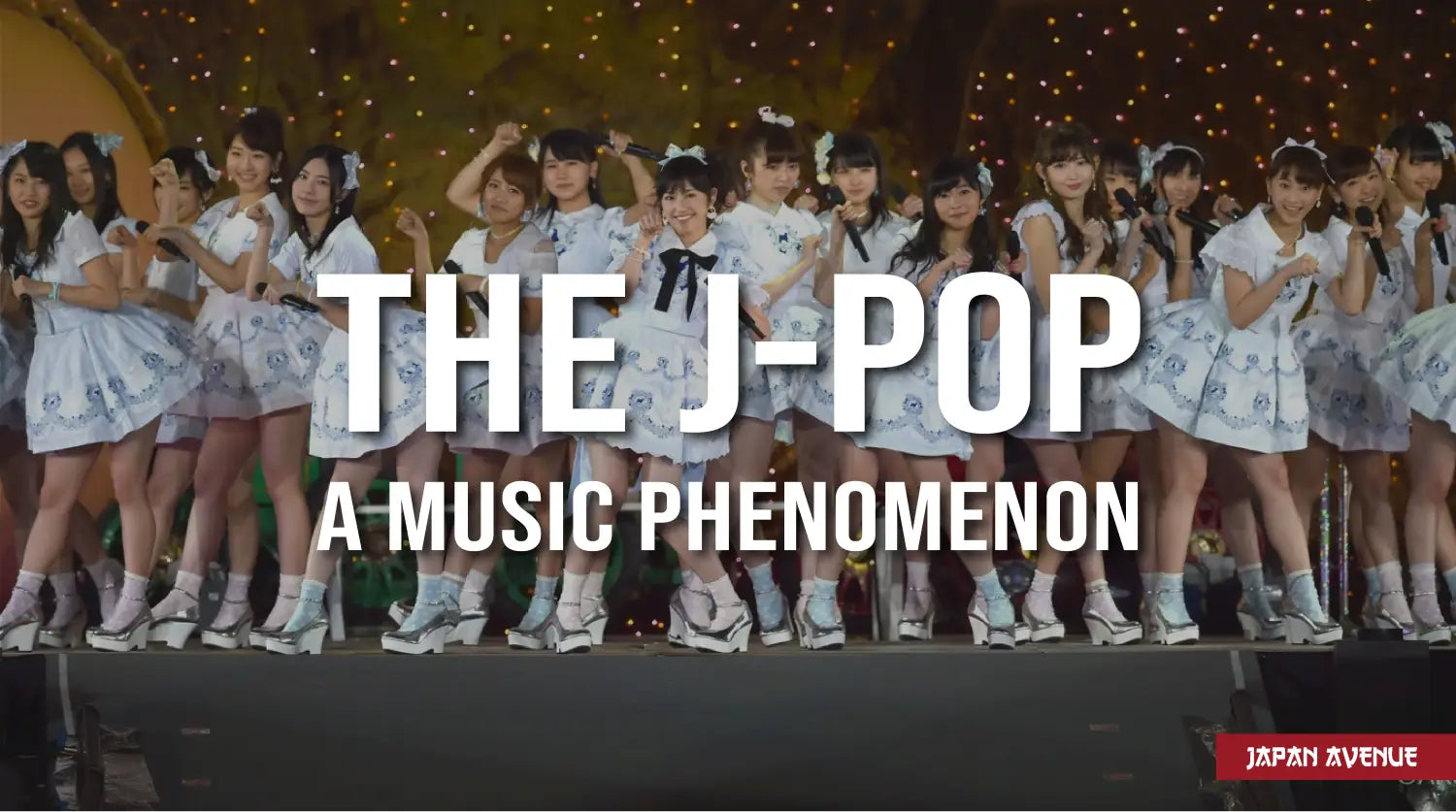The obi belt is a belt that allows to fasten and maintain a kimono in place. Over time, this item has become an inseparable part of traditional Japanese clothing.
However, the kimono obi as we know it today did not always have the same shape and that's what we will discover in this article about the history of the Japanese obi.
Secondly, we will have a look at the different types of obi belts, available nowadays.
Birth and evolution of the kimono obi
It was during the Nara period (710-794) that the ancestor of the kimono obi was just a simple piece of rope allowing to maintain the kosode in place, ancestor of the kimono which was used as undergarment at that time.
Let's also take the opportunity to make a small parenthesis: if you wish to compare the history of the obi with the evolution of the kimono, we invite you to read our article on the History of the Japanese Kimono. That's all. Now, back to the topic 🐑.
During the Nara period, the rope starts to expand into a narrow kind of belt. It still has only a purely functional aspect.
During the Heian period (794-1185), a men's belt appeared and was called ishi no obi (or seki tai). Made of leather and precious stones, it shows the growing interest of the Japanese for this accessory which had been neglected until then. The Muromachi period (1333-1573) marked the development of the obi belt as an ornamental accessory for women.

Evolution of the obi belt, from the Momoyama period (1573-1600) to the Edo period (1600-1868).
During the Momoyama period (1573-1600), while the kosode was being adopted by a large majority of the Japanese population, a braided belt called nagoya obi was introduced. This belt looked like a round rope, usually colored and was tied on the side or in the back, letting the ends, adorned with a pompom, hang freely.
It was only during the Edo period (1600-1868) that the obi belt became an indispensable part of the kimono. Between influences of kabuki theater, innovations in textile art, fashions and governmental regulations, the kimono obi belt has greatly evolved throughout this period.

Ebizo Ichikawa, kabuki theater actor in a feminine role.
At this period, only men were allowed to go on stage for kabuki theatre performances and they had to take female roles. They used costumes made of loose kimonos and wide obi belts in order to mark the feminine side of the character.
The legendary actor Kichiya Kamimura was considered as one of the best. To play feminine roles, he used to wear a kimono with a very large obi belt, tied in the back with the ends dangling.
This kimono obi knot quickly became popular and was named the Kichiya knot. This is only one of many examples and shows the influence of kabuki actors on the sizes and the obi knots.

Geisha wearing an obi with a long knot in the back. Colored photo from 1909.
Until the 1660s, the kimono obi was 2 meters long and 6 centimeters wide. It was first the geisha who began to wear much wider obi belts that were up to 15 centimeters wide.
Shortly before the 1700s, a large majority of women also adopted a kimono obi with a width of up to 30 centimeters. In the early 1700s, the dimensions became standardized: 3.6 meters long and 28 cm wide.
Many ways of tying the obi belt were popularized and the obi belt became an accessory of great importance in the art of Japanese clothing.
At that time, there were over ten different ways of tying the obi knot which could be placed in the front, in the back or even on the side, depending on the wearer's wishes. For a while, the tendency was to tie the knot in the front and then, little by little, women favored the knot in the back (much more practical to move and work).

Colored photographs from the 1870s (early Meiji era). Photographer: Shinichi Suzuki.
In the latest stage of the Edo period, the position of the obi knot informed about the status of the women. For example, married women wore the knot in the back, while bachelors, widows and courtesans tied the belt in the front.

Courtesans wearing the obi knot in the front.
By the mid-1700s, wearing the obi knot in the back became the standard, and by 1795, women no longer wore the knot in the front.
As for the men (let's not forget them 🙃 ), they all wore a more sober and significantly smaller kimono obi. This traditional obi belt was designed exclusively for men.
At the end of the Edo era, the importance of the obi belt was such that it became the ultimate accessory to highlight the beauty of the kimono. At times similar to a real work of art, the kimono obi can be decorated with the most magnificent patterns to emphasize the elegance of the Japanese. The choice of its colors, patterns and fabrics should not be taken lightly, as it shows the degree of refinement. The brocade obi, made of silk fabric embroidered with gold and silver colors, was associated to the most distinguished kimonos while the obi made of raw silk or cotton was used for everyday wear.
The different types of Kimono obi
Japanese culture being rich and complex, it will hardly be a surprise to find out about the many types of obi. Here is a small list with the characteristics of each.
- Maru obi : The most formal obi belt of 33 cm in width and 4 m in length. This obi features beautiful patterns on both sides and a very thick, rigid and weighty fabric, making it difficult to put on.
- Fukuro obi : Formal belt which is usually worn with a furisode, a Japanese kimono with very long and hanging sleeves. This obi is very big with a length between 3m60 and 4m50 and a width of 30 cm. On one of the two sides, the pattern is shown only on the ends of the obi that are visible once the obi is knotted.
- Tenga obi : A formal belt with a luxuriously patterned fabric. This obi is worn during celebrations and other festive events. With its width of 15 cm, this kimono obi is much easier to put on than the maru obi.
- Chuya obi : Reversible obi belt with two different looking sides. This obi is made out of two pieces of fabric sewn together. One side has a sober pattern for everyday wear and the other side is richly decorated to match a more refined kimono.
- Nagoya obi : This belt is characterized by a narrow part which allows to realize the taiko musubi, a popular obi knot, more easily. This lightweight obi can be worn in town or for semi-formal events. Not to be confused with the nagoya obi seen earlier in the article. These two obi have the same name but not the same meaning 😋.
- Hanhaba obi : An informal belt with a width of 15 cm, mainly worn with a yukata or a kamon type of kimono.
- Heko obi : Informal belt characterized by its flowing and lightweight fabric in muslin or other fabrics. The knot of this obi is easy to make which makes it an ideal belt for little girls.
- Sakiori obi : Very informal belt made from scraps and recycled fabrics coming from former kimonos. With a width of 15 cm, this obi is usually worn at home.
- Odori obi : Belt with patterns related to festivals, kabuki theater and Japanese dance performances. This obi has a width of 15 cm and a long length of up to 4m50. The wearing of this kimono obi is usually reserved for geisha and kabuki actors during artistic events.
- Kaku obi : Obi belt for men with a width of 10 cm. Its degree of formality will depend on the material of its fabric. Made of cotton, this obi can be worn with a yukata, and if it is made of silk, then it can be worn with a more formal outfit.
- Darari obi : The belt of the maiko, geisha apprentices, which can measure up to six meters in length in order to realize the dadari musubi, a particular knot of the maiko. On one end of the obi, the kamon of her okiya is sewn, this is the emblem of her establishment (okiya means geisha house).
- Tsuke obi : Modern belt equipped with a pre-made knot. This type of obi exists in female and male versions. Very popular among the new generation as this obi allows to facilitate the wearing of the kimono or yukata by making it accessible to everyone to put on the obi belt.
The obi belt nowadays
Ever since the Meiji era (1868-1912) and the opening of Japan to the world, the wearing of the kimono has fallen into disuse, giving way to modern western clothes. Nowadays, traditional Japanese clothing is rarely worn and only during official ceremonies. As a result, Edo era worthy obi belts are rare and the most beautiful pieces are extremely expensive.

Young Japanese wearing a yukata with an obi - Harajuku district. Credit: Tokyo Fashion.
Tying an obi belt requires some real know-how and unfortunately, less and less people are able to tie an obi knot properly. However, the obi is still worn nowadays, mainly with a yukata, during the numerous festivals that take place in Japan every summer. For those who don't have the time or the know-how to realize a traditional obi knot, there exists a ready to wear version of the kimono obi with a knot that is already made, this obi is called tsuke obi.
Japan Avenue proposes a wide selection of high quality obi tsuke to close your kimono or yukata with ease. To discover them, feel free to have a look at our obi belts collection.
Women can enhance their kimono with a beautiful obi belt that is quick and easy to put on.
Somewhere between Japanese tradition and Western modernity, our modern obi belts are a must-have fashion accessory that will mark your waistline, highlight your feminine side and enhance your figure. A large and trendy belt, approved by Cristina Cordula 😄!


